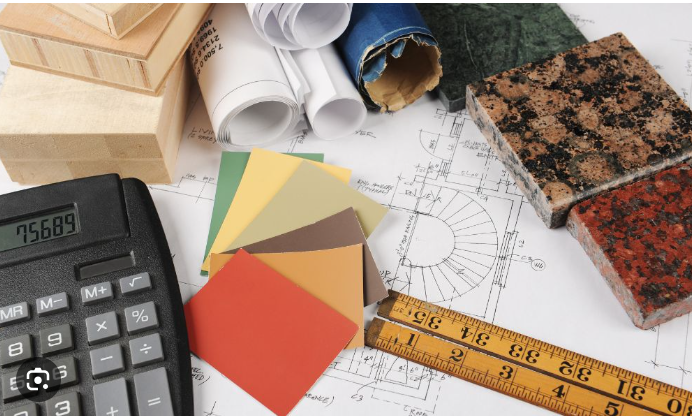In the high-stakes international construction industry, accuracy in estimating isn’t only an exceptional exercise—it’s a need. Whether you’re undertaking a residential redesign or a multi-million-dollar industrial build, the quality of your estimate can make or break the venture. Overestimating can lose you the bid; underestimating can drain your profit margins or derail the entire activity. That’s why every creation corporation, from large-scale creation estimating businesses to solo value estimators, is constantly seeking out ways to sharpen their numbers.
Here are verified techniques to assist in improving your creation estimate accuracy and setting your projects up for success.
Start with Detailed Project Plans
A Cost Estimator begins with unique blueprints and project files. Vague plans result in guesswork, and guesswork invites highly priced errors. Utilizing the information of drafters guarantees that your plans aren’t just technically precise but also clean to interpret. CAD (Computer-Aided Design) drawings provide estimators with clear visuals and measurements, decreasing ambiguities and the probability of miscalculation. Investing in properly advanced plans from the outset is one of the simplest approaches to ensure accurate forecasting later.
Use Historical Data Strategically
While every venture is unique, ancient information provides a valuable benchmark. A pro fee estimator does not depend totally on instinctual intuition but rather draws on beyond overall performance—materials fees, labor hours, and subcontractor costs—to make modern estimates.
Track your tasks diligently and keep an organized database. You’ll begin to see trends in fabric utilization, hard work productivity, and dealer pricing that may enhance both accuracy and performance over time.
Leverage Modern Estimating Software
Gone are the days of guide spreadsheets and handwritten fees. Modern estimating gear streamlines the entire technique, limits human mistakes, and offers real-time price updates. Many creation-estimating corporations use advanced software programs that integrate with CAD systems, permitting takeoffs and measurements to sync directly with virtual plans.
Programs like ProEst, Buildertrend, or Sage Estimating allow for speedy changes, what-if scenarios, and consistent documentation, enabling tighter control over price range forecasting and client communication.
Perform Comprehensive Site Assessments
No software can replace the cost of a properly designed website. Every activity website comes with its personal set of challenges—soil situations, accessibility, drainage, zoning necessities—that may considerably affect the value and timeline of an undertaking. An accurate estimate shouldn’t forget those on-the-ground realities. Encourage your Construction Estimating Companies estimating crew or outside estimator to do a stroll-through and accumulate firsthand insights earlier than finalizing numbers. This proactive approach can save you surprises later.
Break Down the Estimate by Division
Breaking an estimate into divisions (CSI MasterFormat, as an instance) presents clarity and makes it less complicated to double-take a look at for missing factors. Estimators can focus on particular trades—framing, electrical, HVAC, and finishes—making sure that nothing slips through the cracks. This approach also enables production estimating organizations to delegate quantities of the estimate to specialists or alternate experts, enhancing accuracy across the board.
Factor in Labor Productivity Variances
Labor is one of the main variable costs in construction. Factors like climate, crew talent degree, task complexity, and even the time of 12 months can impact how quickly work gets finished. Relying solely on ideal productivity assumptions can throw off estimates. A realistic estimator carries buffer time and adjusts labor quotes according to process-specific elements. This may mean constructing allowances for time beyond regulation, slowdowns, or subcontractor fluctuations.
Update Material Prices Frequently
Material expenses are one of the riskiest components of construction estimating. Supply chain problems, seasonal demands, and global monetary shifts can motivate sudden spikes in prices. Stay in contact with suppliers and reveal market tendencies to keep your numbers updated. Many construction estimating corporations keep a rolling database of material expenses and replace it monthly or quarterly, depending on how fast prices are changing in their area.
Collaborate with the Entire Project Team
The most accurate estimates come from collaboration. Involve assignment managers, architects, engineers, and CAD Drafters in the process. Their insights into layout cause, constructability, and sequencing can display hidden costs or highlight opportunities for fee engineering. Team-based, totally estimating no longer best improves accuracy; however, it also aligns expectations early, lowering the risk of war or high-priced redesigns down the road.
Account for Contingencies and Risk
No matter how accurate your estimate is, there’ll usually be unknowns. Smart estimators construct contingency budgets to cover unexpected, demanding situations. These need to be based totally on hazard analysis now, not simply an arbitrary percent. For example, a task involving underground utilities might warrant a higher contingency than a truthful warehouse build. A qualified value estimator assesses potential dangers and factors them into the estimate transparently.
Conduct Post-Project Reviews
The mastering doesn’t stop while the undertaking ends. Conducting an autopsy assessment among envisioned and actual fees allows you to pick out steady blind spots. Were the exertion hours underestimated? Did substances cost more than predicted? These insights are gold for refining destiny estimates. It’s an exercise that pinnacle-performing creation-estimating corporations prioritize—and one that can notably enhance long-term profitability.
Final Thoughts
Construction estimating is both an art and a technological know-how. While no estimate will ever be perfect, utilizing these techniques can significantly reduce errors and increase confidence in your numbers. Whether you’re a solo value estimator, a part of a huge corporation, or a CAD drafter helping with task documentation, the key lies in being thorough, using the proper tools, and continuously learning from experience. With the proper structures in place, accurate estimates end up not just an AI, but a competitive advantage.



